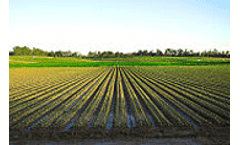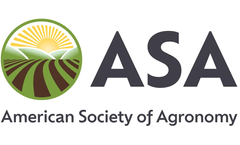Soil Tillage Articles & Analysis
16 news found
Soil structure and working depth Previous reports from the field have been contradictory, and vary according to soils that respond well to tillage and soils that are hard and heavy. ...
Apart from that, rapeseed is the earliest vacating leaf crop, thus allowing sufficient time for thorough soil tillage and adequate preparation of the seed bed for the subsequent crop. ...
Farmers and advisors, for instance, can consult the site for information on alternatives for chemical soil decontamination, the best use of green fertilisers or the application of non-inversion tillage. ...
By testing different techniques to improve water efficiency, the researchers found that the most effective method involved using straw to cover the soil when growing maize and wheat together in the same growing season. ...
Results GAP In addition to the seminar presentations, there was room to view the results of various GAP in potatoes. GAP were related to soil tillage, seed quality, planting methods, fertilization, pest and disease control, and irrigation. ...
“We not only recommend the optimal use of certain herbicides, but we also strongly support the adoption of integrated weed management practices that include the best crop rotations, soil tillage practices and crop planting densities.” For a virtual tour of the WRCC simply visit our Bigger Picture at http://wrcc.thebiggerpicture.bayer.com/ About ...
“The added benefit of cover crops is the increase in soil organic matter,” he said. “Tillage destroys soil organic matter. “Tillage will never make your soil better; it is a short-term benefit while cover crops are a long-term ...
The researchers had anticipated that using herbicides and flipping the soil (inversion tillage) would help legumes to establish. However this wasn't the case, possibly because flipping the soil buried the organic top layer, whereas more minimal tilling techniques only broke it up, resulting in increased soil fertility. They ...
The survey also shows that America’s young farmers and ranchers are committed environmental caretakers, with 55 percent using conservation tillage to protect soil and reduce erosion on their farms. AFBF President Bob Stallman said the results of the YF&R survey point to the future of U.S. agriculture being in good hands. ...
Conventional: tillage takes place just before sowing, when the soil is not flooded; 2.) ...
These include switching to more drought-tolerant crops or livestock breeds, modifying irrigation techniques, adopting practices such as zero-tillage to conserve soil moisture, changing crop calendars or grazing times, and implementing seasonal climate forecasting. ...
Although tillage is another expense for farmers and generally increases the risk of soil erosion, a one-time tillage may be performed to correct some problem, such as a perennial weed problem. ...
A comprehensive assessment of soil structural properties and their relationships with soil organic C across a range of soils under different scenarios of tillage and crop management would provide a better understanding of no-till effects. ...
The four systems varied in terms of crop rotations, soil tillage, mechanical and chemical weeding and crop management. One system used no herbicides at all. ...
The five soil preparation methods compared in the study were: conventional ploughing to a depth of 25 cm non-invasive loosening of soil to 15 cm, using a wide-bladed grubber (a tilling tool) slight loosening of soil to 15 cm with a disc harrow (also a tilling tool) sowing seeds with a shallow grubber, which leaves a layer of mulch on the ...
The increasing popularity of reduced tillage on crops has not only been an important development in combating soil erosion, but it has also been associated with increasing organic material and producing high crop yields. For peanut crops, however, reduced tillage has not gained a large acceptance as a viable practice, as findings of inconsistent ...









